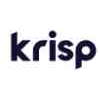Agentic AI Comparison:
Krisp vs Mitra AI Phone Calling
Introduction
This report compares two AI-powered communication tools: Mitra AI Phone Calling and Krisp. While both leverage artificial intelligence to enhance communication, they serve different primary purposes. Mitra focuses on making AI-powered phone calls on behalf of users, while Krisp specializes in noise cancellation and audio enhancement for virtual meetings.
Overview
Mitra AI Phone Calling
Mitra is an AI phone assistant that can make calls on behalf of users, handling both personal and business-related communications. It uses the user's caller ID and can be customized to match communication preferences.
Krisp
Krisp is an AI-powered noise cancellation and audio enhancement tool designed to improve the quality of virtual meetings and calls by removing background noise and providing clear audio.
Metrics Comparison
autonomy
Krisp: 7
Krisp operates autonomously to cancel noise and enhance audio quality, but it doesn't make decisions or carry out complex tasks like making calls.
Mitra AI Phone Calling: 9
Mitra can independently make and manage entire phone calls on behalf of users, demonstrating a high level of autonomy in communication tasks.
Mitra shows higher autonomy in its ability to handle entire conversations, while Krisp's autonomy is limited to audio processing.
ease of use
Krisp: 9
Krisp is known for its simple setup and seamless integration with various communication platforms, requiring minimal user intervention once configured.
Mitra AI Phone Calling: 8
Mitra's app interface appears straightforward, allowing users to easily instruct the AI to make calls. However, some learning curve may exist in effectively communicating instructions.
Both tools are user-friendly, but Krisp edges out slightly due to its more passive nature requiring less active user engagement.
flexibility
Krisp: 8
Krisp works across multiple platforms and can be used for various audio-based communication methods, including calls, video conferences, and recordings.
Mitra AI Phone Calling: 7
Mitra can handle various types of calls and can be customized to user preferences. However, it's primarily designed for phone calls, which limits its application in other communication formats.
Krisp demonstrates greater flexibility in its ability to work across various communication platforms and formats.
cost
Krisp: 7
Krisp offers a free plan with limited features, with paid plans starting at $8 per month for individuals and $15 per month for businesses, providing a range of options for different user needs.
Mitra AI Phone Calling: 6
Specific pricing details for Mitra are not provided, but it's mentioned that the app may have in-app purchases, suggesting potential costs for advanced features.
Krisp appears to offer more transparent and flexible pricing options, including a free tier, which may make it more cost-effective for some users.
popularity
Krisp: 8
Krisp has gained significant popularity, especially since the rise of remote work. It has been adopted by major companies and has millions of users, as evidenced by its 2.5M monthly visits.
Mitra AI Phone Calling: 5
As a newer and more specialized tool, Mitra's popularity appears limited. It's currently only available on iOS devices, which restricts its user base.
Krisp demonstrates substantially higher popularity and wider adoption compared to Mitra, likely due to its broader applicability and longer presence in the market.
Conclusions
While both Mitra AI Phone Calling and Krisp leverage AI to enhance communication, they serve different primary purposes and excel in different areas. Mitra shows impressive autonomy in its ability to handle entire phone conversations, making it a unique tool for those looking to delegate call tasks. However, its specialization in phone calls and limited availability may restrict its broader appeal. Krisp, on the other hand, offers wider applicability across various communication platforms, focusing on improving audio quality. Its ease of use, flexibility, and established popularity make it a more versatile choice for general users looking to enhance their virtual communication experience. The choice between the two would largely depend on the specific needs of the user - whether they prioritize AI-powered call handling or noise cancellation and audio enhancement across multiple platforms.

